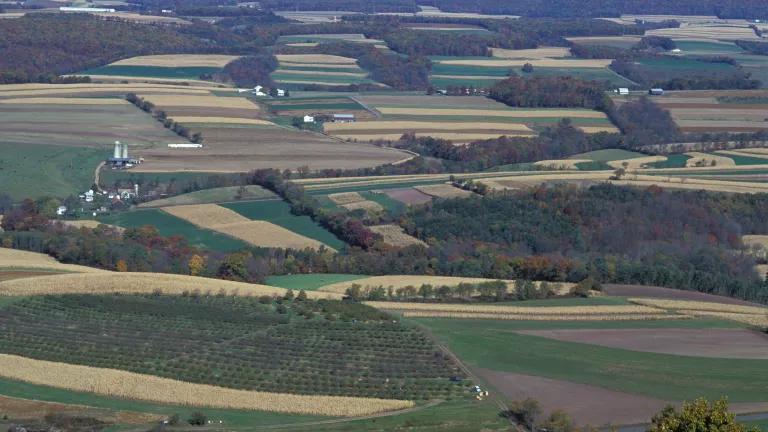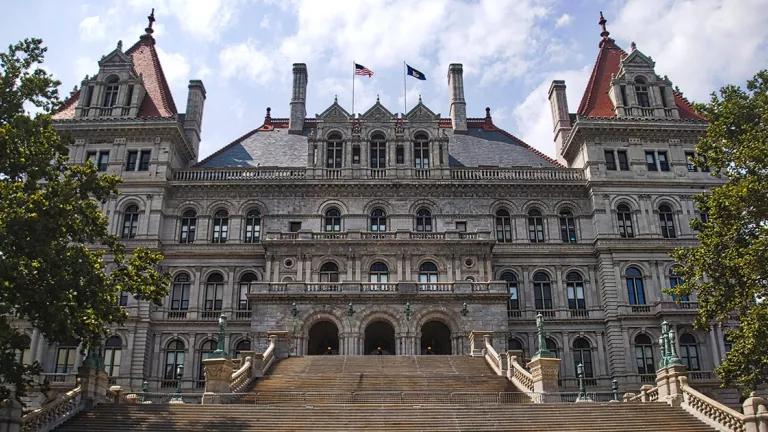Community Perspectives: Wasted Food in Philadelphia
There is not a one-size-fits-all approach to crafting inclusive food waste prevention messaging. Philadelphia worked with community-based organizations to run community focus groups to better understand the biggest barriers to preventing food from becoming waste in local communities.

Volunteers holding bunches of carrots as a family waits for their produce box.
Philadelphia has an ambitious goal to divert 90% or more of the city’s waste away from the landfill by 2035. Because food is the largest waste stream at nearly 17%, the city recognized reducing food waste would be a big component of their efforts. Since there is not a one-size-fits-all approach to crafting inclusive, food waste messaging, Philadelphia worked with community-based organizations, Strawberry Mansion CDC and Southeast Asian Mutual Assistance Association Coalition, to run community focus groups. The goal of these sessions was to better understand and craft messaging around the biggest barriers to preventing food waste within different communities.
Background: Philadelphia’s Food Matters Initiative
In 2019, Philadelphia partnered with NRDC’s Food Matters Regional Initiative to assess where food waste was occurring and how much food could, instead, be rescued for redistribution to community members in need of emergency food assistance. The analysis showed that households are responsible for nearly 40% of the city’s wasted food, and that 1 in 6 Philadelphians experiences food insecurity – much higher than the national average of 11%.
In 2021, as part of the Food Matters Regional Initiative, recognizing that food waste prevention offers the greatest environmental, social and economic benefits, city staff wanted to better understand what aspects of preventing food waste would be most palatable in Philadelphia, particularly at the household level since it is such a large collective source of municipal food waste.
“We knew that we wanted to design a messaging campaign speaking to food waste prevention in Philadelphia homes, both because we know residential food waste is a huge percentage of our total food waste, and because we knew we needed a powerful way to engage residents in our Food Matters work. However, we didn’t know what the messages would be,” said Helena Rudoff, former Philadelphia Food Matters City Lead and City of Philadelphia Office of Sustainability Waste Reduction Programs Lead.
Challenge: Lack of Representation in Developing Prevention Messaging
Philadelphia conducted a pilot food waste campaign in 2020 using existing NRDC Save the Food materials. As a result, the team decided to embark on a new campaign that was more inclusive of all communities, demographics and residents in Philadelphia and reflected the nuances of the city.
In rolling out a larger campaign, the city decided to hone a more distinctive campaign that would align with the experiences and needs of all Philadelphians, particularly those in marginalized communities who experience food injustice. In order to do so, the campaign developers needed input from residents about their experiences, attitudes and preferences.
Solution: Community Focus Groups
Rudoff and Nidhi Krishen, Senior Manager for Climate Mitigation, set up community conversations following the lead of Cheyenne Flores, Community Climate Resilience Specialist, who had previously done focus groups on residential energy burden. For the food waste prevention campaign, the Office of Sustainability partnered with two community-based organizations to host and co-facilitate four focus groups with at least ten local community members participating in each. One organization was Strawberry Mansion Community Development Corporation, an economic development community-based non-profit in the predominantly Black, same named historic neighborhood of North Philadelphia. The second partner was Southeast Asian Mutual Assistance Association Coalition, a refugee, immigrant, and asylee serving organization in South Philadelphia. City staff worked with each organization to modify focus group agendas and questions to be accessible and sensitive to participants.
The focus groups were structured with four components: an opening discussion about food and food waste; a brief survey; a presentation of the draft campaign materials; discussion about reactions to elements of the campaign.

Martin Rodriguez (left) selling vegetables to customers from his stand at the Corona Farmers Market
Lessons Learned
These discussions resulted in more detailed awareness of residents’ concerns about food access and quality, disposal services and a call for more education on the value of food.
- Many residents cited an inability to shop often as a significant driver of food waste. Proximity to a grocery store or food pantry was a problem for residents to acquire good food. Additionally, some people cited a lack of access to a freezer as a barrier to preserving fresh food between shopping trips.
- Residents cited food received from a food pantry or other food assistance as a source of food waste. Residents who receive food assistance through pre-established food boxes that are dropped off at their homes noted that they often receive too much food or food they cannot or do not want to eat, which goes to waste.
- In addition to food access challenges, food quality was a major concern for residents. Residents explained that some of the food they buy or receive is already old and past peak quality. They shared feelings of distrust toward food that was near or past the date on the package.
- Education was a common theme throughout the discussions. Residents wanted more education for kids and adults across a variety of institutions, including schools, restaurants, and supermarkets. They wanted people to understand why it is important not to waste food and how to better manage food by preserving it or storing it. Residents value the education of school-aged children recognizing the importance of instilling good habits at school which carry over to the home.
- Without prompting, residents were interested in access to compost services. Participants wanted an alternative to disposing of their food waste into the landfill. And many stated they did not have an in-sink disposal system, which was of interest to the city.
- Residents had strong feelings about the environmental and the economic reasons to reduce food waste. Many participants cared deeply about the ties between food, the environment, and their personal budgets.
Impact and Next Steps
The focus groups helped Philadelphia adjust the campaign to better reflect the experiences and preferences of the community members. For example:
- Language like “it’s simple and easy” was removed in order to reflect the multitude of challenges faced by Philadelphians who often see food wasted due to circumstances outside of their control, despite their best efforts.
- Philadelphia is a “foodie” city and the campaign has leaned into a focus on eating.
- The campaign is focused on ensuring that residents have access to good food.
- There are complex views on the interplay between wasting food, wasting money, and the labor that goes into producing food.
- City staff were able to identify which sectors to engage in distributing the campaign.
“This work reinforced the importance of making good quality food easily accessible to residents in our neighborhoods. This is something we have already been focused on - this project reinforced that work which continues.
It also helps us have a more nuanced and empathetic understanding of food waste - instead of assuming that it can always be prevented, we came to understand that for many of our residents, food waste is an outcome of a lack of food access. Residents don't want to waste food; but for many, they cannot help it because of how they access food. Redefining "preventable" food waste was an important outcome from this project and helped to reshape our definitions and approach to this work. It was extremely impactful!”
—Nidhi Krishen, Senior Manager for Climate Mitigation, Office of Sustainability, City of Philadelphia
Ultimately, the city decided to call the campaign “Eat Away at Food Waste” with various messages related to cost savings and tips for ensuring food doesn’t go bad before it is eaten.
Implications for Policy and Systems-Level Solutions
The findings from these focus groups go beyond informing messaging campaigns and highlight the importance of not tackling issues like food waste reduction in a silo. In many communities, the underlying drivers of household food waste intersect with systemic barriers to social, environmental and economic equity—lack of access to quality food, transportation, city services like compost collection, good k-12 education options, and livable wages.
Cities, counties, states and the federal government must pass policies that promote equitable, resilient and regenerative regional food systems and work to dismantle the harmful zoning and planning policies that drive inequitable access to living wages, food, transportation, healthcare, childcare and so much more.
Tips for designing focus groups in your community:
- Engage a local organization working in the community as a partner in the focus groups. Local organizations have relationships in the community and understand how best to engage with residents.
- Design the focus groups with the partner organization. Work with the partner organization to develop the focus group structure and questions, gaining their input at every step of the process.
- Compensate the partner organization and focus group participants.
- Follow-up. Return to the partner and the community to share the results of the sessions and the outcomes of the project to ensure that the community feels engaged and empowered in ongoing work.





